The customer Journey appears more and more often in our blogs and is incredibly important in B2B marketing. But how do you actually create a (good) customer journey?
How many times have you lost interest in a product/service?
You're browsing online, only to click the cross after a few minutes, never to return to that page. If you stop to think about it, it probably happens more often than you can count.
But why did you lose interest in the product/service? Probably something went wrong during this process. In other words, somewhere in the customer journey, you chose a different path.
From a business standpoint, this is a big problem. You don't want your customers to lose interest. Instead, you want to give them all the reasons in the world to buy your product.
Therefore, the Customer Journey is the most important part of the user experience.
It does not matter if you have a great design or the best product in the world... If the customer journey is not perfect, you will never get (many) customers.
On paper it looks simple and consists of 3 steps, but in practice the customer journey is more complex than that. It consists of many small parts that all work together to form a whole.
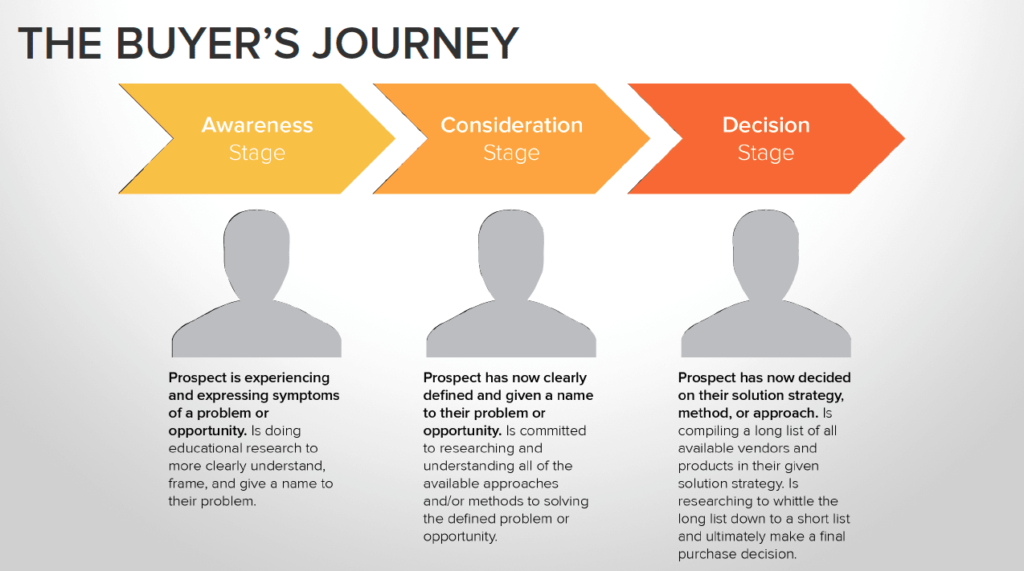
For the best results, you need to know your customer journey better than your customers do. You need to go through the entire timeline and optimize it at every step. Most companies don't do this. They think that a well-designed website with good navigation will magically create the perfect customer journey.
But it doesn't.
You build a good customer journey from the beginning, based on analytics. When you're done, you'll have a detailed customer journey structure that will optimize your conversions.
Before you create a customer journey, it is important that you understand your customers. To do this, you can create specific buyer personas so you know exactly who your customers are and what they want.
The more detailed personas you have, the better. This is an example of a buyer persona:
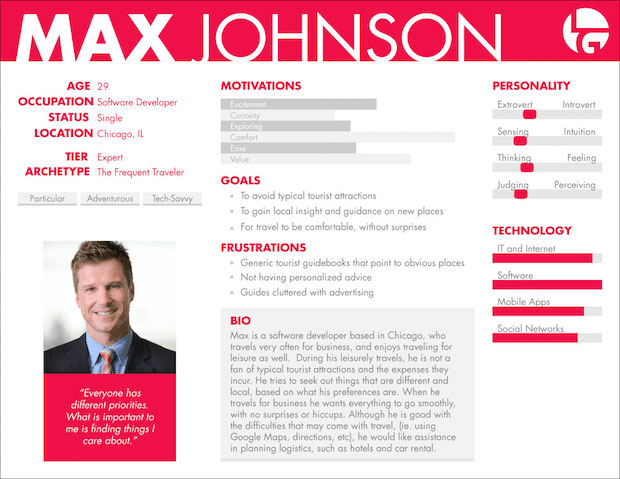
If you see and read this, then like book characters, you probably have formed an image of this person. Right?
That's the goal when you create personas. They should be as realistic and detailed as possible.
Demographic data
To do this, you need a lot of data. For example, first look at demographic data, which gives you the broadest representation of your target audience.
Data such as average age and income, are very important when filling out the buyers persona. Google Analytics is one of the best ways to collect general data about your target audience.
To gather demographic data about your visitors in Google Analytics, go to audience → demographic → overview. There you will get a graph for age and gender.
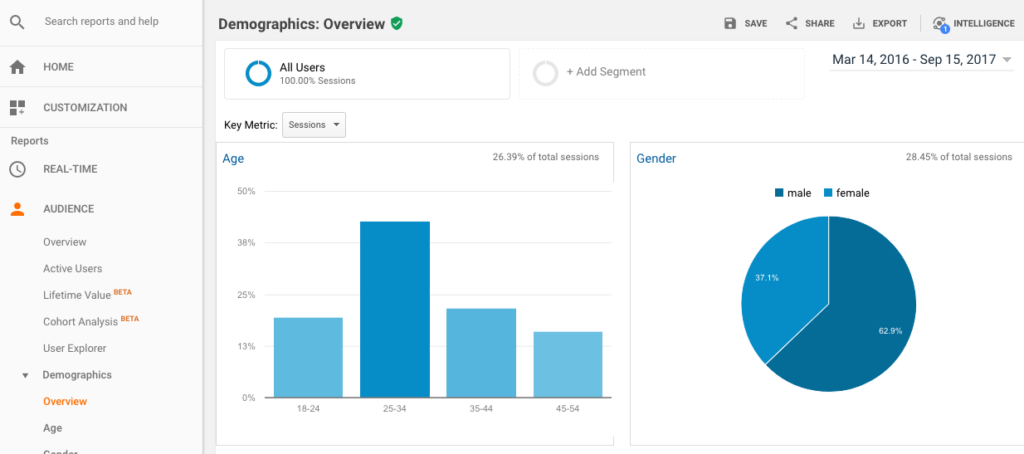
For more demographic data in Analytics, you can go to audience → geo → location.
Then you will see the following:
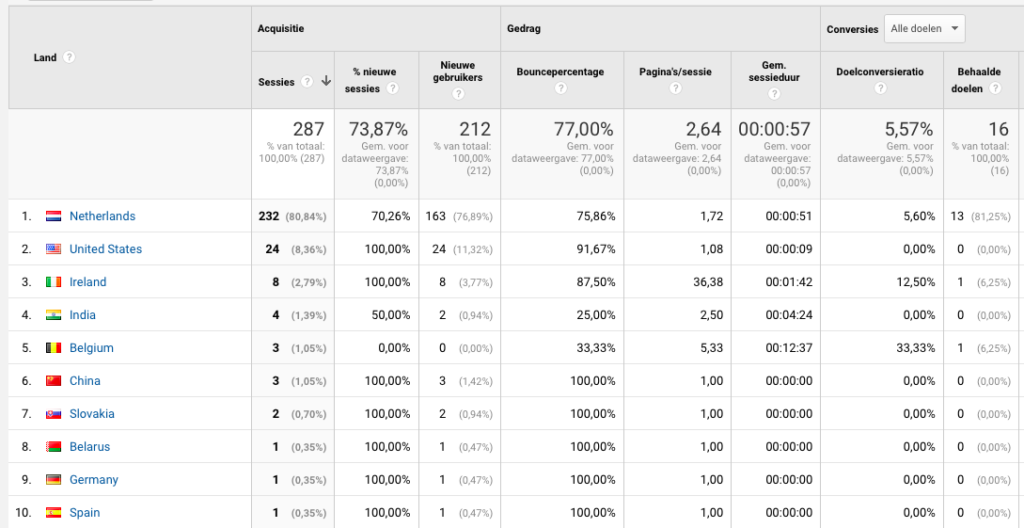
The location is very general, until you make it more specific by selecting a country/place.
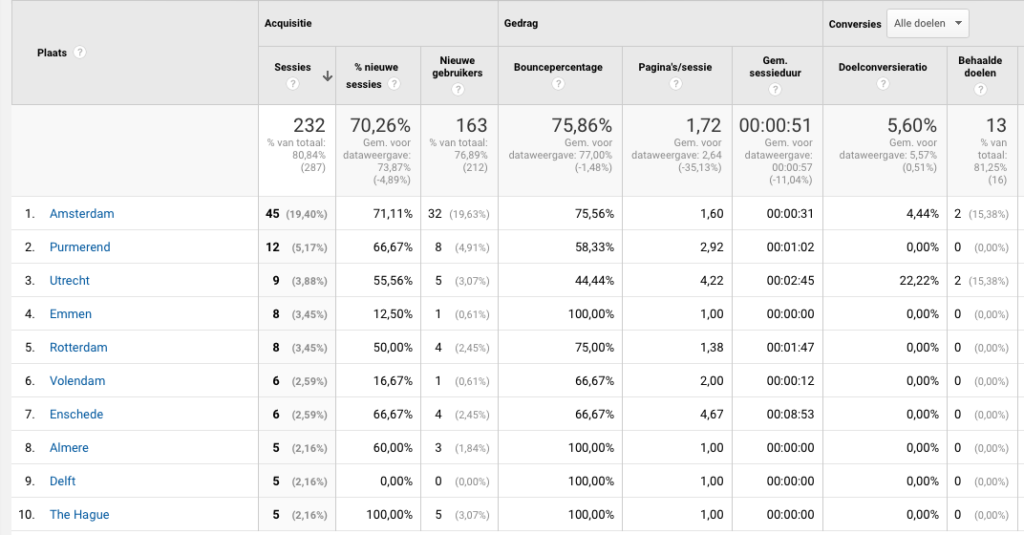
Then you can see what interests your target audience has. These tell you who your customers are. In Google Analytics, you can see some basic interests: target audience > interests > overview.
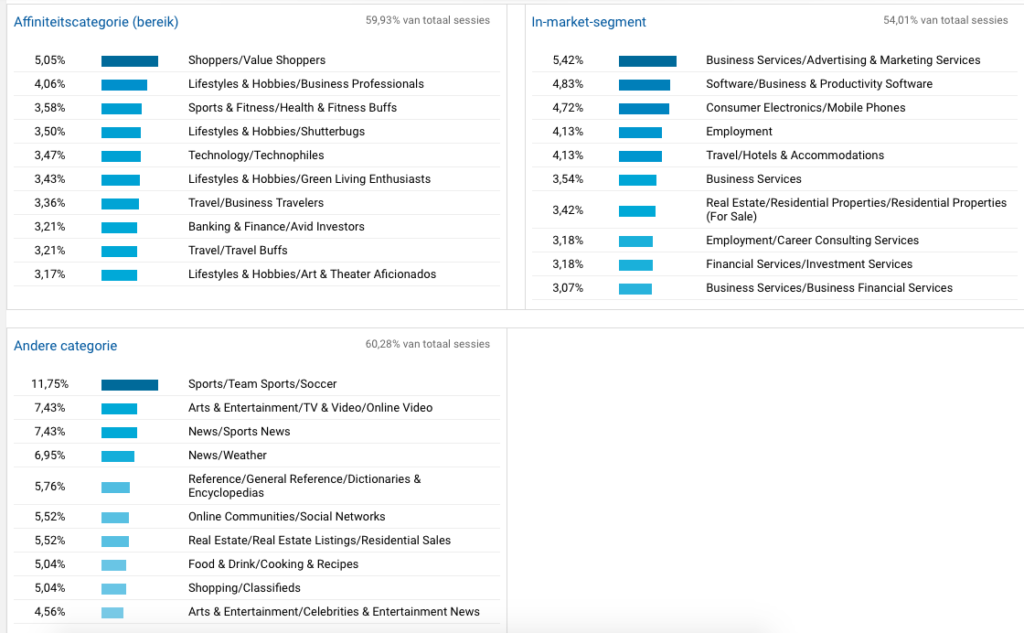
Once you have collected varied information, you can use this to build a buyer persona. Once you've completed that, you can start with the customer journey itself.
The customer journey is not the same for every business. You have to deal with different factors, such as marketing strategies and sales funnels, that affect what your journey looks like.
It is important that you divide the customer journey into steps so that you have a clear overview of what is going on. Most marketers do this by creating a customer journey map.
Before creating such a folder, you need to answer some questions:
Following these answers, you can outline a customer journey.
Of course, there could be multiple paths your customers take... Still, we recommend outlining one path first. You can outline the others later.
This is an example of what a customer journey map might look like:
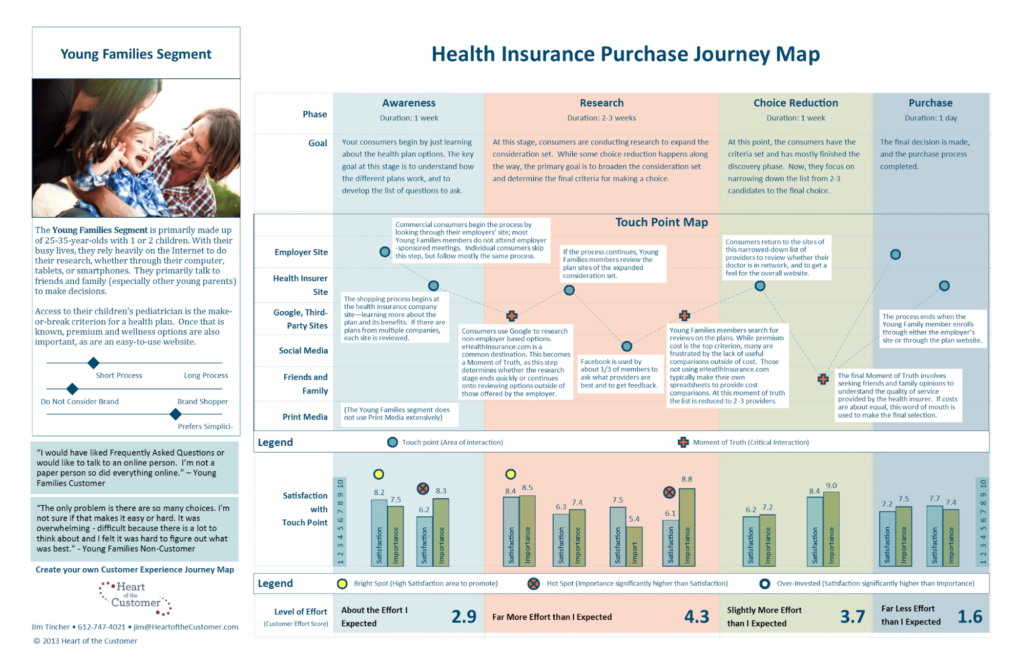
This map has 4 stages.
To figure out how many stages your customer journey has, you need to think about how you yourself would go through the journey. What steps would you take before you buy the product?
In most cases, a customer journey has the following steps, in this order:
Now you need to decide which stages apply to your customer journey. Maybe there are additional steps that are not on the list. If so, add them to the map.
Once you have defined all the steps, you can track what your customers do at each step. These are the contact points.
For example:
If a customer goes to your website and then to a landing page, the home page and landing page are both contact points.
What contact points do your visitors encounter at each step? Place these on your map:
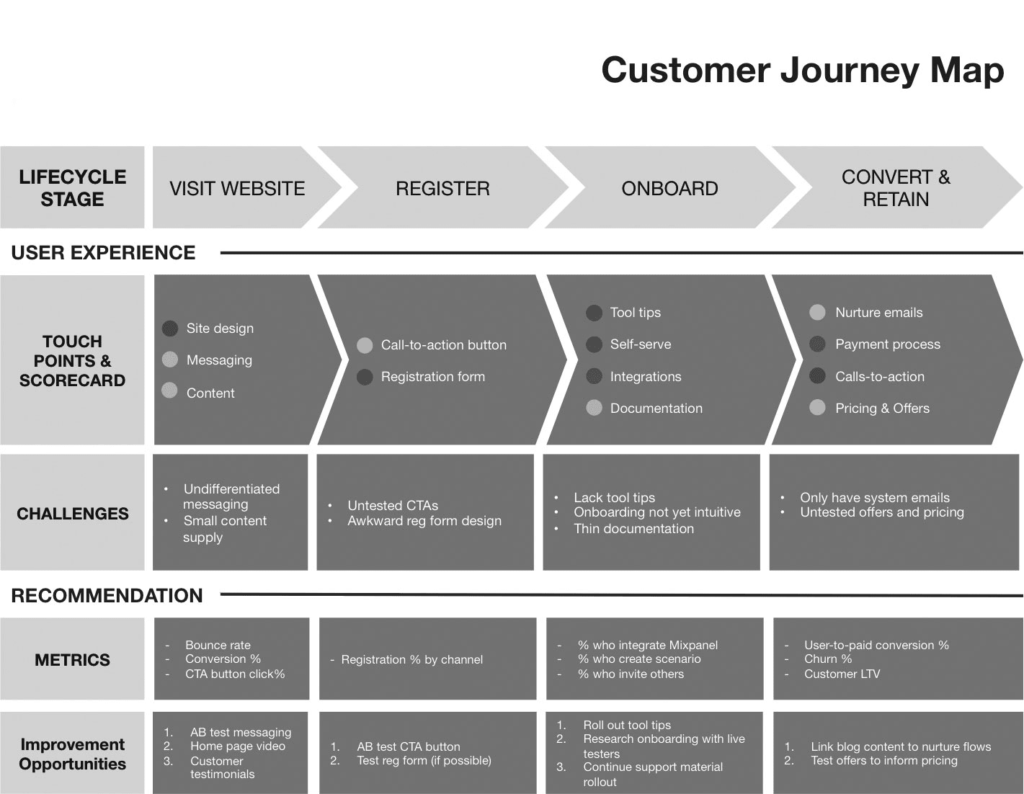
This is an example of different touch points in a customer journey map.
If you know where your visitors are going, you can figure out what actions they are taking. It's up to you to make each step as easy as possible. Divide the customer journey into separate actions. That way you make it easier for visitors to perform actions.
Below is an example of a customer journey map focusing on user actions.
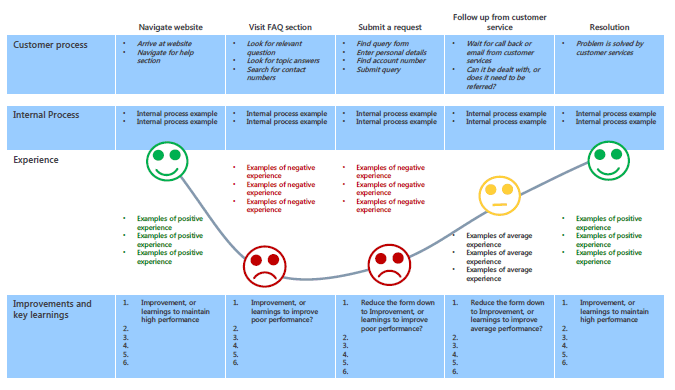
We'll use this example for a moment.
In the second step of this example, the user goes to the FAQ section. So the user is looking for more detailed information about the products/services or answers to any objections. If you expect your visitors to go to the FAQ page, you should create specific (frequently asked) questions to address the objections.
When you are creating a customer journey, you are mostly speculating what your visitors will do. If you make sure you know this for sure, you can provide customers with the best user experience and increase your conversions.
No customer journey is perfect, but you can fix any mistakes. If you proactively look for weaknesses, you can fix them as soon as possible. That's how you avoid losing customers.
In Google Analytics, you can see your users' behavior on the website by going to Behavior > Behavior Flow. You will then see the behavioral flow.
Here you can see where people go on your website. This is also a good way to map contact points.
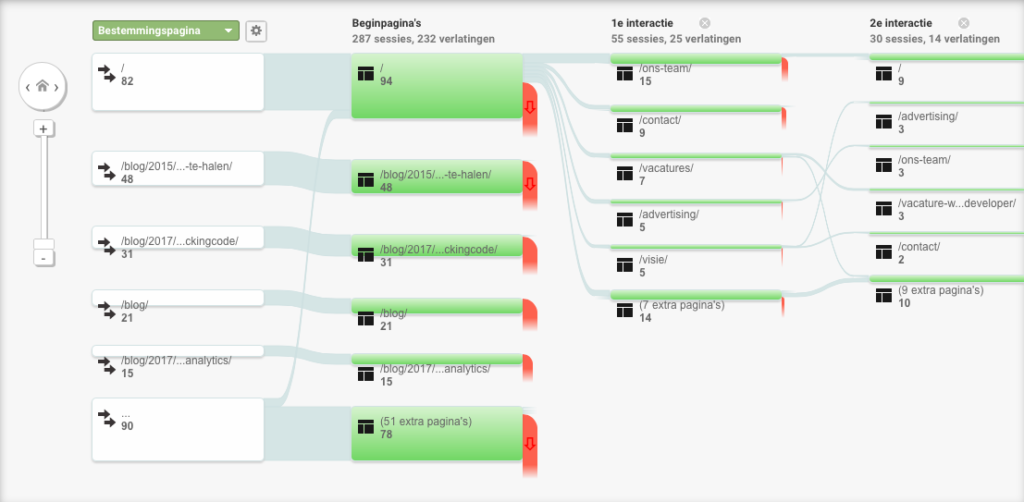
In addition, you can see how many visitors you lost on which pages by scrolling over the blocks.
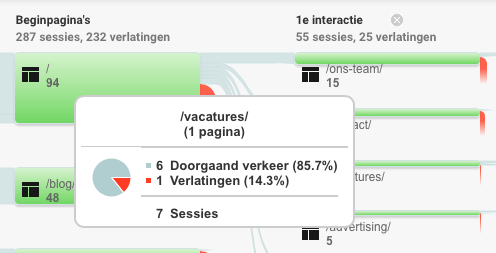
The abandonments show how many visitors left the website after that page. If you notice that visitors keep abandoning on the same page, then you better optimize that page. If you have many abandonments on different pages, then the visitors are probably a bit lost in the customer journey.
At this point, it is good to find out why people leave the website on those pages. That way you can improve your website and optimize the customer journey.
Then, if you pull out the buyer persona, you might get a new perspective and understand why customers drop out in your customer journey.
But you may also find that after analyzing your customer journey, you need to create a new buyer persona.
This is an example of a customer journey map created for a specific buyer persona.
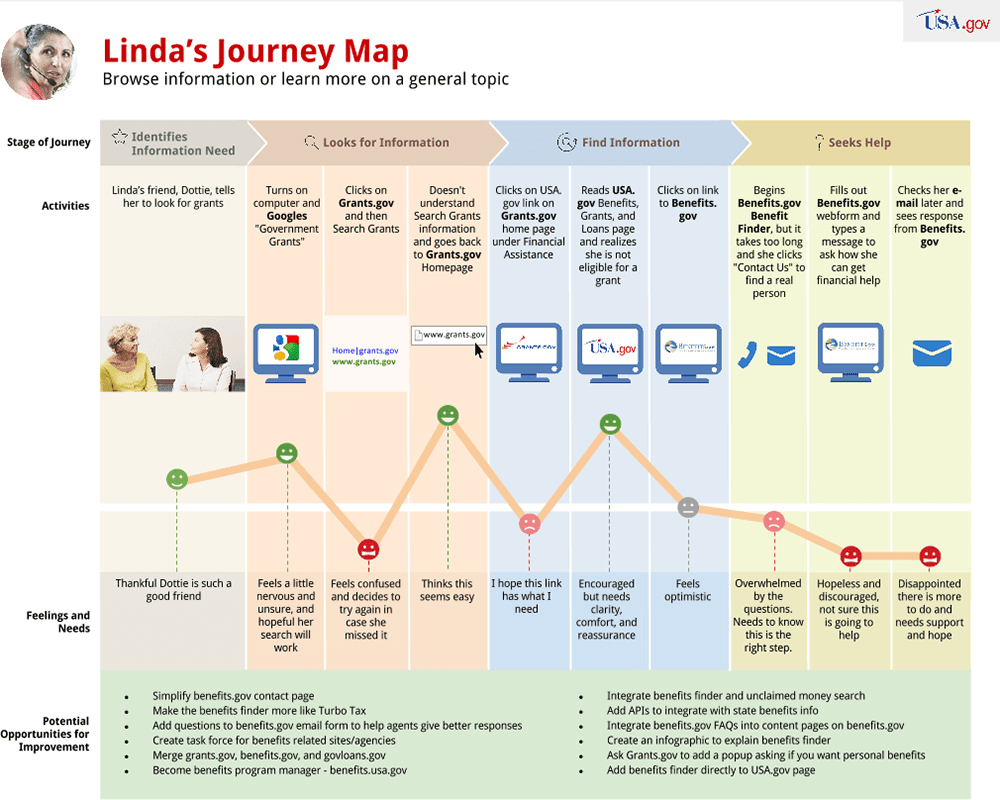
This map is very detailed. This can help you improve the customer journey because you are looking from one point of view: the buyer persona.
There are very many benefits to a successful customer journey.
Just look at these statistics:
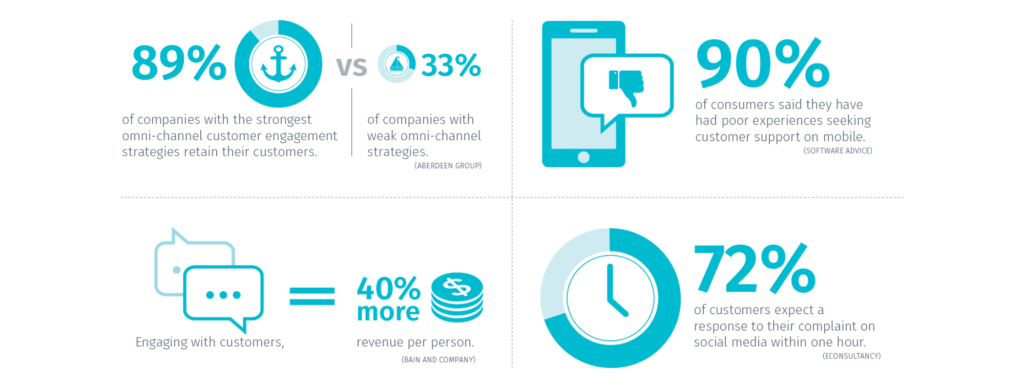
There's a reason why so many marketers are spending more and more time creating a customer journey. In every industry, you get more and more competition. If you want to stand out above your competition, you can't do without a (good) customer journey.
In the end, it's all about how you interact with your users. You should make sure that everything is ready for your customers so that they enjoy the journey and keep coming back for more. The more time you spend designing the customer journey, the better it will be and the happier your customers will be
The customer journey can make or break the success of your business. So don't forget it in your online marketing strategy!
Need help setting up the customer journey?
Get in touch!
